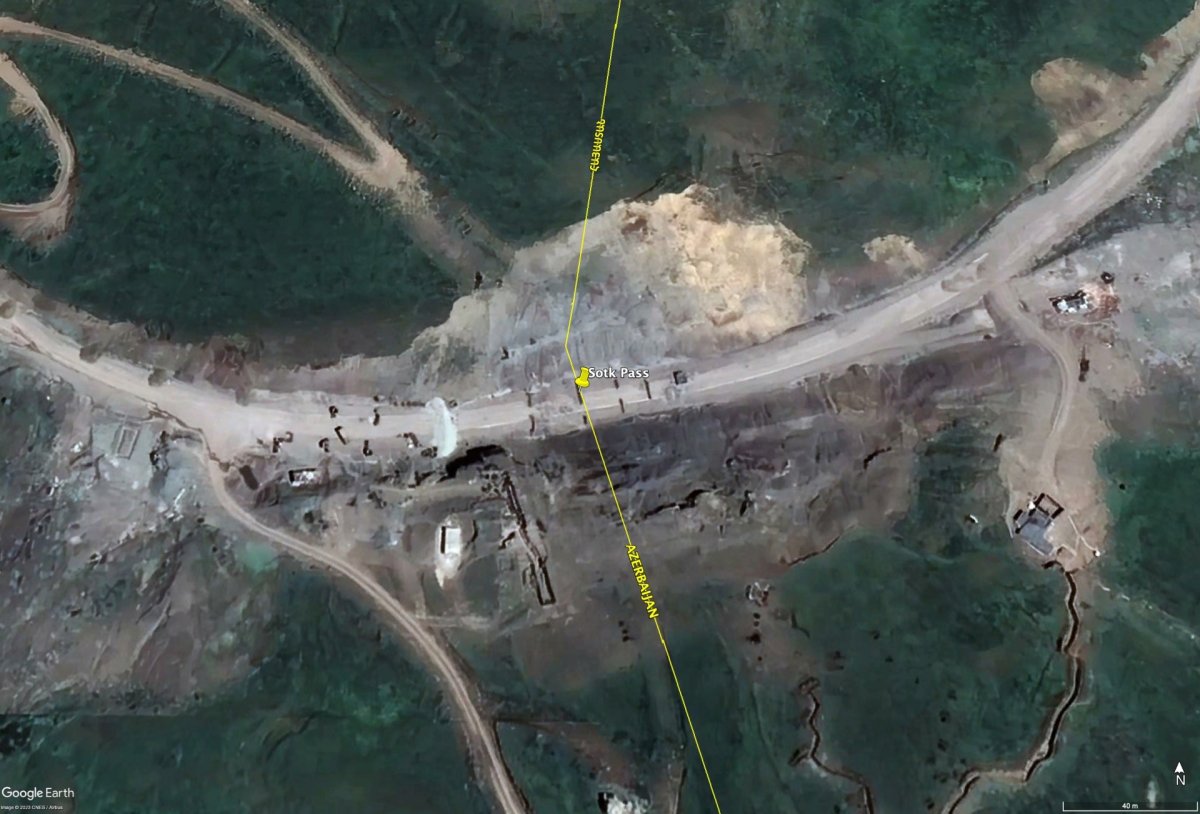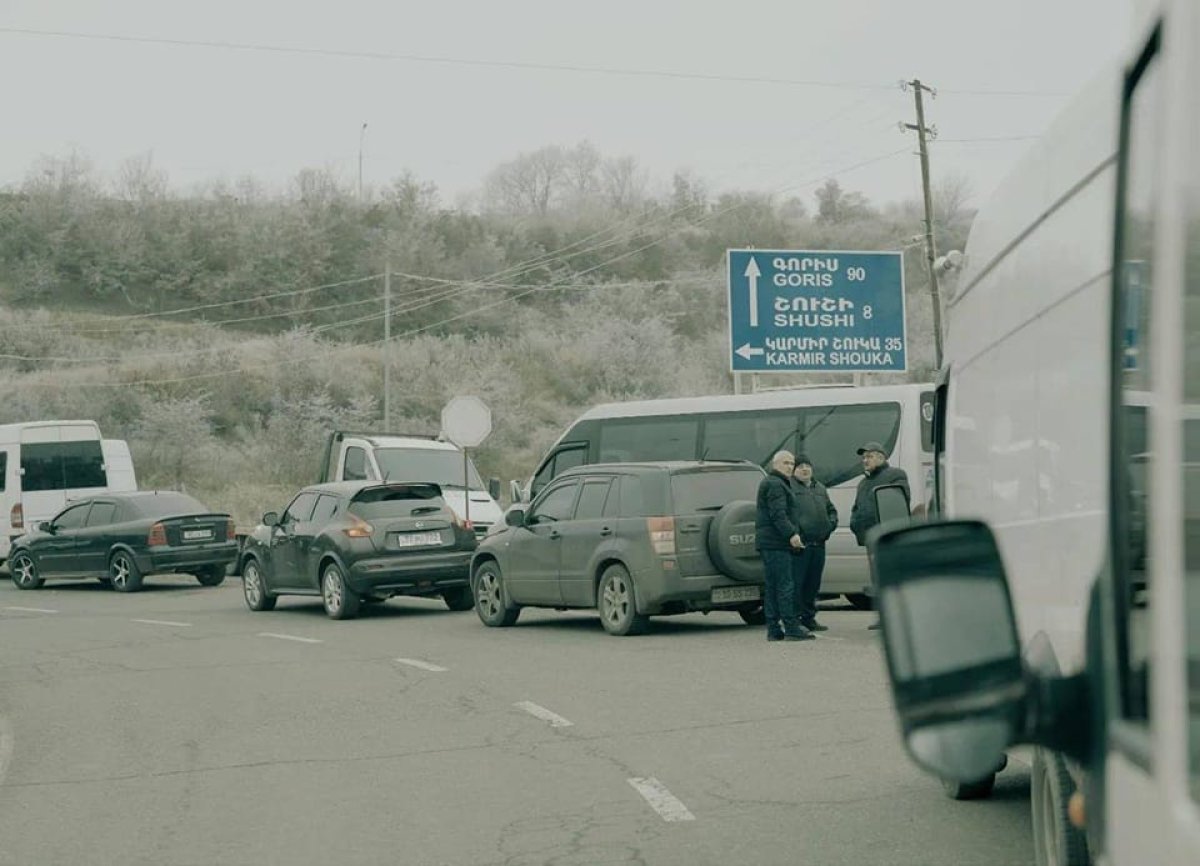In February 2023, the Zovighian Public Office, my family’s philanthropic organization commissioned, a 10-month-long investigative research mission. It was less than two months into the blockade of the Lachin Corridor in Artsakh, also known as Nagorno-Karabakh, where besieged citizens, journalists, and community leaders were desperately calling for help during the winter. Schools had already closed due to lack of electricity and gas to keep children warm. Medical capacity had taken a serious hit and hospitals were already counting their medicinal inventory. An entire population of about 120,000 ethnic Armenians were already living with critical food insecurity and with food ration cards because every bite had to be counted. Artsakhi Armenians were entirely cut off from the world and were declaring a genocide was upon them.
Together with the open-source intelligence (OSINT)-based research group Filtrace, we monitored the blockade to study Azerbaijan’s actions and intent. We discovered that the blockade, both in its design and execution, exploited geographic and geopolitical vulnerabilities to achieve specific and complex objectives in a mere few months.
ANTHONY PIZZOFERRATO/Middle East Images /AFP via Getty Images
Starting on Dec. 12, 2022, Azerbaijan’s Commemoration Day of National Leader Heydar Aliyev, ethno-nationalistic and anti-Armenian footage was published on the social media accounts of state-sponsored alleged eco-activists, which allowed us to interpret the images and their geolocation. We geolocated the Lachin Corridor road closure to be facing the southwest entrance of Shushi. With no mines in the immediate vicinity, the choice to block this particular route to protest alleged Armenian mining in the region could not be explained. The Lachin Corridor was weaponized and became a hostile environment that was physically unsafe and psychologically terrorizing for any Armenian traveler or humanitarian convoy. This significantly undermined the Trilateral Agreement that had been brokered to cease the 44-day war of 2020.
As Azerbaijan came under global pressure to open the Lachin Corridor, the government replaced their rhetoric of saving the environment with safeguarding their sovereign rights. On April 23, Azeri military units crossed into the Lachin Corridor and established a military checkpoint at its entrance, formalizing territorial control since the 44-day war. The checkpoint was geolocated on a bridge between Armenia and Azerbaijan, across the Haraki River. Erecting the checkpoint nullified the Trilateral Agreement and effectively militarized a comprehensive siege of Artsakh Nagorno-Karabakh. The checkpoint became a terrorizing passage for ethnic Armenians fleeing into Armenia and facilitated the state arrests of citizens and community representatives.

Photo Courtesy of Google Earth
Azerbaijan claimed that there was no blockade because alternative routes to the Lachin Corridor existed, and they nominated the Aghdam Road for the transportation of humanitarian aid. This proposal once again violated the Trilateral Agreement; rather than protecting a free connection between Artsakh Nagorno-Karabakh and Armenia, the focus on the right of free movement was relegated to the right of access to aid. This proposal meant Armenians would be fully dependent on Azerbaijani aid, coercing a capitulation to terms of forced integration. Our analysis confirmed the two transborder roads were inaccessible and all other proposed roads departed from Azerbaijan, cutting all direct access to Armenia.

EMMANUEL DUNAND/AFP via Getty Images
Our 10-month research exposed a concerning pattern of calculated steps and pressure points to strategically control the population and territory of Artsakh Nagorno-Karabakh. Multi-dimensional emergencies against the Indigenous Armenian population ensued, from existential and humanitarian catastrophes to economic, geopolitical, and self-governance crises.
On Sept. 19, 2023, Azerbaijan launched a full-scale military assault into Artsakh Nagorno-Karabakh resulting in a decisive military victory within only 24 hours. The attacks triggered a comprehensive population-wide forced displacement of all ethnic Armenians, disarmed the Artsakh Defense Army, and dissolved the public institutions of the autonomous government. Since then, over 99 percent of Artsakhi Armenians have fled their centuries-old homeland, leaving vacant towns and cities ready for the full implementation of Aliyev’s Great Return. A multi-stage strategy of genocide bolstered by unconventional and conventional war strategies had succeeded.

Photo Courtesy of First News
Over the course of our investigation, we saw how the siege became an information blockade. The Azeri government funds and runs an international credibility campaign that denies the suffering of Artsakhi Armenians. Many members of the international community chose to believe the perpetrator and did not fulfill their obligations as state parties of the Genocide Convention to prevent genocide against the Armenians of Artsakh Nagorno-Karabakh. Since the full forcible population transfer, Azerbaijan has built newfound diplomatic leadership. At the one-year anniversary of the Lachin Corridor blockade, rather than be held accountable for multiple crimes of war and genocide, Azerbaijan recently won the bid to host the United Nation’s climate summit (COP29) next year.
Today, the blockade and genocide continues. Artsakhi Armenian culture, heritage, and private property are still under siege, leaders and citizens are still being held in arbitrary detention, and there is no right to go back through the Lachin Corridor and return home. The comprehensive siege of Artsakh Nagorno-Karabakh has been a complex endeavor, requiring deep intelligence and imagination. The question remains: Is Azerbaijan committing genocide alone, or do they have complicit partners?
Lynn Zovighian is a philanthropist and founder of the Zovighian Public Office, partnering with communities facing genocide and crises in the Middle East and Caucasus through research, advocacy, and diplomacy. She commissioned Filtrace for this OSINT research investigation.
The views expressed in this article are the writer’s own.
Uncommon Knowledge
Newsweek is committed to challenging conventional wisdom and finding connections in the search for common ground.
Newsweek is committed to challenging conventional wisdom and finding connections in the search for common ground.


